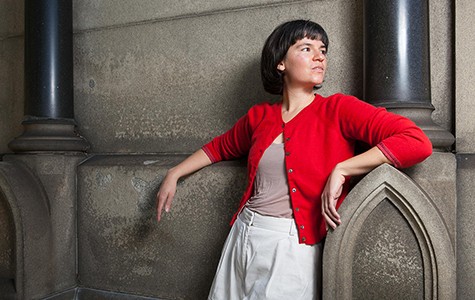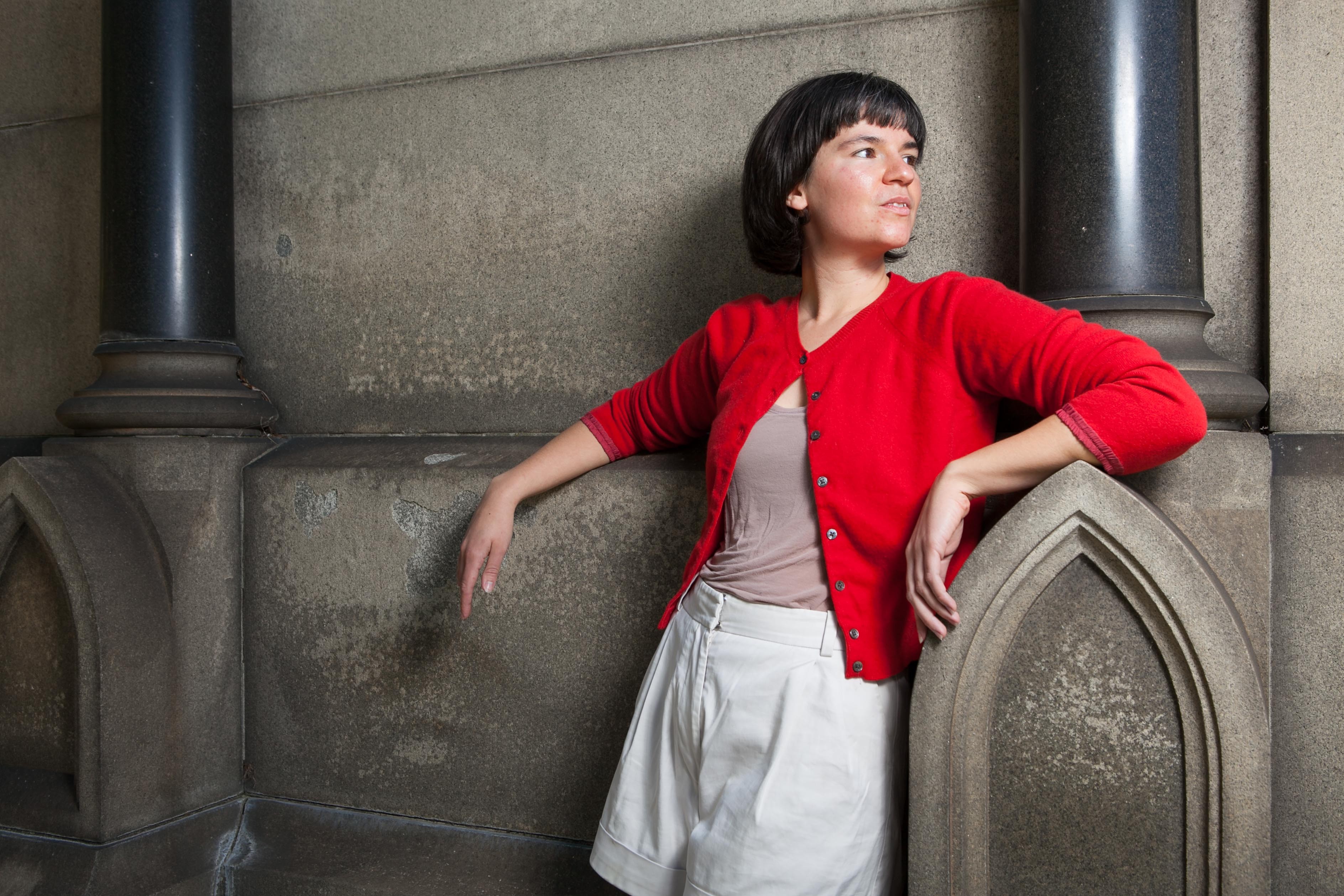Madalyn Merkey took her 2013 spring break as an opportunity to page through every book on electronic music in the Mills College library without interruption. The scholarly leisure activity turned up Due Scuole di Musica Elettronica in Italia, an Italian text written by Enore Zaffiri published in 1968. “It had these visual scores,” Merkey recalled. “They were very beautiful and minimal, like Frank Stella paintings.”
Lodged between countless volumes of avant-garde arcana, the foreign text at first snared Merkey’s attention with its simple diagrams. Ultimately, though, it became the focus of her master’s thesis in electronic music and uncovered an obscure historic narrative that curiously paralleled her own development as a sound artist.
Using Google Translate, Merkey began to decipher the rest of the book. It detailed two early conservatories of electronic music in Italy: one in Florence and another founded in the city of Turin by Zaffiri himself in 1964, which was called the Studio of Electronic Music of Turin. Merkey learned through closely inspecting the text that Zaffiri was a maverick theorist of electronic music who called upon precise methodology and math to advance a new musical language.
According to Zaffiri, Merkey wrote in her thesis, the 1960s electronic music scene in Italy was stilted by “acoustic hedonism, electronic sound stasis … and lack of serious discourse.” In other words, it was muffled, muzzled, and dull. Zaffiri decided to jettison all of that, not in the instinctual, improvisatory manner of the free-jazz player, but rather through meticulously devised charts of data and corresponding diagrams.
Crucially, Merkey said, “The ideas are modular: You can take one component and build off of that.” She continued, “The Italian electronic studios came out of phonology, the study of speech, so I thought it was interesting that his ideas were also about stringing together elements.” Furthermore, Merkey admired Zaffiri’s brazen disdain for unimaginative contemporaries. “I loved how hard he was on people who were easily satisfied because that’s something I’ve experienced with my own work.”
Merkey, who is 26 and sports a distinguished gray streak in her hair, always preferred alternative means of expression. As a kid, she liked computer code over book reports, and gravitated eventually toward technical illustration, which she initially focused on as a student at the School of the Art Institute of Chicago. Quickly, though, she “got to a point with visual art where it became too formal. … Once I stopped doing illustration, I sort of embraced being a child of the internet.”
Among other things, that entailed a web tool to interpret Britney Spears lyrics according to given principles of the tarot. At the same time, Merkey leapt into Chicago’s flourishing experimental music scene. She launched a label, Irma Vep Tapes, on the premise that she’d distribute exciting work by other artists. Merkey said that was only successful up to a point because, “I realized that I wasn’t going to find the sort of music I wanted to hear. I had to make it.”
She started with tape recorders, mixing and abusing sound sources live with treated vocal accompaniment. One early project was a tribute to the slapstick comic Jerry Lewis, in which she sampled his routines and performed portions of songs from his musical films. Merkey’s early emphasis on oblique treatments of the voice, which evokes the phonological origins she admired in Zaffiri, led to an affinity for the vocoder. The vocal effect is perhaps best known from Laurie Anderson’s unlikely 1981 chart success “O Superman,” but it was developed decades before as a means to encrypt spoken messages for radio transmission. Merkey’s work with the device culminated in Scent, an album containing five woozy, somnambulant vocoder-oriented pieces that the Los Angeles-based label New Images Ltd. released in 2012 to acclaim in publications such as The Wire, the international experimental camp’s authoritative paper of record.
Merkey called Chicagoans “fierce” and said that the social climate imbued her live performances at the time with harshness and severity. “It was almost embarrassing,” she recalled. “Live, it was very human, almost as if no one was supposed to be watching.” Fully committed to sound, she was then inspired in part by the late Robert Ashley — who directed Mills’ Center for Contemporary Music in the 1970s and created daring operatic work — to pursue her graduate degree in electronic music in Oakland, where her hilltop residence contrasted with life in ferocious Chicago.
“In Chicago, all of the sounds ricochet between buildings,” she said. “Where I lived in the Oakland hills, sounds are longer and move very fluidly. I wanted to make music with that compositional element.”
That impulse resulted in Valley Girl, an album completed before her Zaffiri discovery and released in 2014. The cheeky title is a play on the music’s geographic conceit: an impressionistic emulation of Oakland’s topography with electronic music. It’s an enthralling listen, full of gentle low glissandi and punctuated by geysers of more spritely tones. Her voice appears intermittently like a half-formed specter, lending the work a bit of nagging menace. The packaging — a dark blue and black image of Merkey reclining before reflective still water, the punning title at odds with its serious typeface — is a great visual analog for the music. As Merkey put it, “I wanted [the album] to be austere, bare, in a sense, and ominous.”
Merkey professed to love moving from town to town. For now, though, she’s settled in Oakland, if not for the charming topography than for the abundance of synthesizer manufacturers at which she can probably land a job. The label that’s released her two full-length albums, New Images Ltd., boasts the sort of Angeleno credibility needed to throw a concert at the Getty Museum. Merkey is preparing to play one this summer. Still, in noting her preference for the Bay Area over Los Angeles, Merkey invoked Zaffiri again, saying that Oakland is more like Turin, the Italian city where Zaffiri founded a conservatory.
Upon graduation, the old inquisitive impulse gripped her once again. Ever the student who would spend spring break in the library, the credentialed Merkey decided to continue her research independently. She traveled to Italy, where a sympathetic professor helped her make contact with Zaffiri. Merkey’s unwitting comrade declined a meeting, citing poor health, but he wrote her back. He had married a singer and created many more works of art. “He was very supportive,” Merkey said. “And he included a DVD of his final work — a very slow visual piece, an hour of shifting shapes and colors.”














